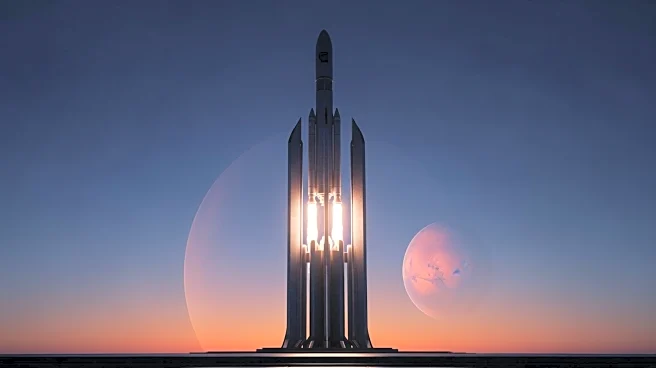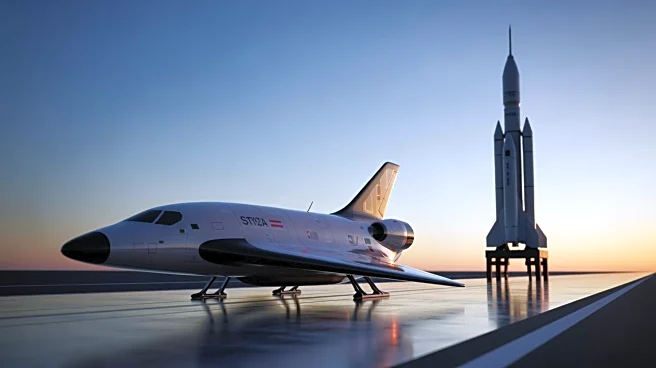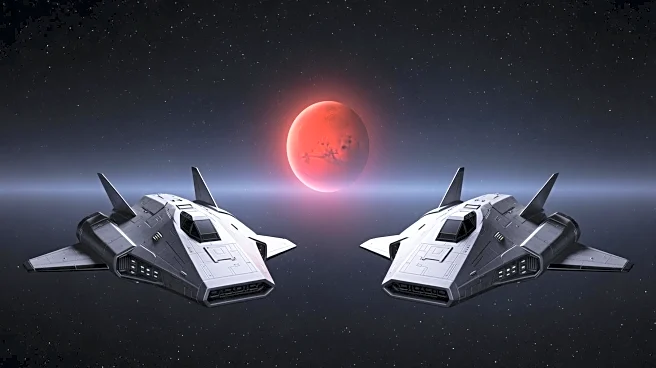What's Happening?
Blue Origin has successfully launched NASA's twin ESCAPADE spacecraft to Mars using its New Glenn rocket, marking a significant achievement in commercial spaceflight. This mission is part of NASA's SIMPLEx
program, which aims to study the interactions between the solar wind and the Martian atmosphere. The launch also included Blue Origin's first-ever booster landing with the New Glenn rocket, positioning the company as a strong competitor to SpaceX. The New Glenn's capability to transport heavier payloads to low Earth orbit is seen as a strategic move to challenge SpaceX's dominance in the market.
Why It's Important?
The successful launch of the ESCAPADE mission by Blue Origin represents a pivotal moment in the collaboration between NASA and private companies. This partnership allows NASA to leverage advanced technologies and innovative solutions from commercial entities, enhancing the scope and capacity of its space exploration missions. The mission's focus on Mars' magnetosphere study is crucial for understanding the planet's drying environment over time. By engaging with commercial partners, NASA not only gains access to cutting-edge technology but also shares risks and resources, which are essential for the sustainability and success of long-term exploration missions.
What's Next?
The ESCAPADE mission will initially head to the sun-Earth Lagrange Point 2 (L2) before proceeding to Mars. The twin spacecraft, named Blue and Gold, are managed by the University of California, Berkeley, and will conduct studies to understand Mars' atmospheric conditions. The success of this mission could lead to further collaborations between NASA and private companies, potentially expanding the scope of future space exploration projects. As Blue Origin continues to develop its capabilities, it may offer more robust options for both commercial and governmental missions.











